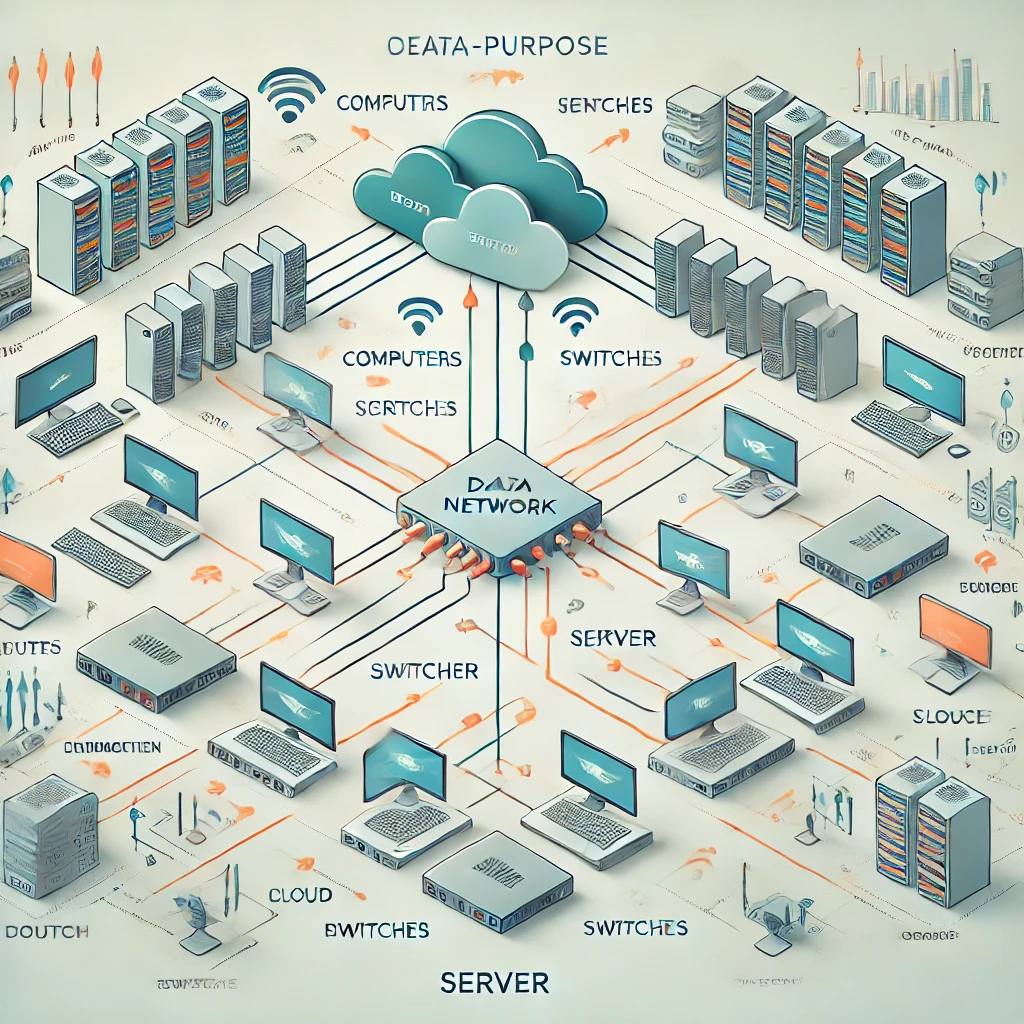Transmission Media in Data Communications: Understanding the Physical Layer of Network Infrastructure

Categories:
4 minute read
In our increasingly connected world, the way data physically travels from one point to another remains a crucial yet often overlooked aspect of modern communications. Transmission media, the physical paths along which information flows, form the foundation of all data communications. This comprehensive guide explores the various types of transmission media, their characteristics, applications, and the factors that influence their selection.
Understanding Transmission Media
Transmission media refers to the physical means through which data, instructions, and information travel between computing devices. These pathways can be broadly categorized into two main types: guided (wired) and unguided (wireless) media. Each type has its own set of characteristics, advantages, and limitations that make it suitable for specific applications.
Guided (Wired) Transmission Media
Twisted Pair Cable
Twisted pair cabling remains one of the most commonly used transmission media in modern networks, particularly in Ethernet installations. These cables consist of pairs of insulated copper wires twisted together to reduce electromagnetic interference.
Types of Twisted Pair Cables:
Unshielded Twisted Pair (UTP)
Most common and cost-effective
Categories range from Cat3 to Cat8
Used in home and office networks
Maximum length typically 100 meters
Susceptible to external interference
Shielded Twisted Pair (STP)
Additional metallic shield for better noise protection
Higher cost than UTP
Better performance in electrically noisy environments
Requires proper grounding
Commonly used in industrial settings Coaxial Cable
Coaxial cables offer superior protection against noise and higher bandwidth capabilities compared to twisted pair cables. Their construction includes:
Central copper conductor
Insulating layer
Metallic shield
Protective outer jacket
Applications of Coaxial Cables:
Cable television distribution
Long-distance telephone lines
High-speed internet connections
Radio frequency transmission
Computer network connections Fiber Optic Cable
Fiber optic cables represent the pinnacle of guided transmission media, using light pulses to transmit data through thin glass or plastic fibers. They offer several significant advantages:
Key Benefits:
Extremely high bandwidth
Very low signal attenuation
Immune to electromagnetic interference
Enhanced security
Lighter weight compared to metal cables
Long-distance transmission capability
Types of Fiber Optic Cables:
Single-mode Fiber
Smaller core diameter
Longer transmission distances
Higher bandwidth
More expensive
Commonly used in long-haul networks
Multi-mode Fiber
Larger core diameter
Shorter transmission distances
Lower cost
Easier to install and maintain
Suitable for local area networks
Unguided (Wireless) Transmission Media
Radio Waves
Radio waves form the basis of many wireless communication systems, offering flexibility and mobility.
Characteristics:
Omnidirectional propagation
Ability to penetrate buildings
Frequency range from 3 KHz to 1 GHz
Affected by atmospheric conditions
Applications:
AM/FM radio broadcasting
Mobile phones
Wireless LANs
Bluetooth devices
IoT devices Microwaves
Microwave transmission operates at higher frequencies than radio waves, offering increased data capacity.
Key Features:
Line-of-sight transmission
High frequency (1-300 GHz)
Narrow beam width
Susceptible to weather conditions
Used for point-to-point communication
Common Uses:
Satellite communications
Terrestrial microwave links
Wireless broadband
Radar systems Infrared
Infrared transmission offers short-range, high-bandwidth communication options.
Characteristics:
Short-range communication
Line-of-sight requirement
Immune to radio frequency interference
Cannot penetrate solid objects
Cost-effective for specific applications
Applications:
Remote controls
Device-to-device data transfer
Indoor wireless networks
Industrial automation
Factors Affecting Transmission Media Selection
When choosing transmission media for specific applications, several factors must be considered:
- Performance Requirements
Bandwidth needs
Transmission speed
Distance requirements
Error rates
Latency considerations
- Installation Environment
Indoor vs. outdoor installation
Environmental conditions
Physical space constraints
Electromagnetic interference levels
Security requirements
- Cost Considerations
Material costs
Installation expenses
Maintenance requirements
Upgrade potential
Lifetime value
- Regulatory Compliance
Local building codes
Industry standards
Environmental regulations
Safety requirements
Future Trends in Transmission Media
The field of transmission media continues to evolve with new technologies and improvements:
Emerging Technologies
Hollow-core fiber optics
Plastic optical fiber
Li-Fi (Light Fidelity)
Advanced wireless standards
Quantum communication channels Environmental Considerations
Energy-efficient designs
Recyclable materials
Reduced electromagnetic pollution
Sustainable manufacturing processes
Best Practices for Implementation
To ensure optimal performance and longevity of transmission media installations:
Proper Planning
Conduct thorough site surveys
Document all requirements
Plan for future growth
Consider redundancy needs
Quality Installation
Use certified installers
Follow manufacturer guidelines
Implement proper testing procedures
Maintain detailed documentation
Regular Maintenance
Schedule periodic inspections
Monitor performance metrics
Update documentation
Plan for upgrades
Conclusion
The choice of transmission media plays a crucial role in determining the performance, reliability, and cost-effectiveness of data communication systems. As technology continues to advance, new forms of transmission media emerge, offering improved capabilities and addressing current limitations. Understanding the characteristics, advantages, and limitations of different transmission media is essential for network designers, administrators, and IT professionals.
Whether implementing a new network infrastructure or upgrading existing systems, careful consideration of transmission media options ensures optimal performance and future scalability. By staying informed about the latest developments in transmission media technology, organizations can make informed decisions that align with their current needs and future growth plans.
Feedback
Was this page helpful?
Glad to hear it! Please tell us how we can improve.
Sorry to hear that. Please tell us how we can improve.